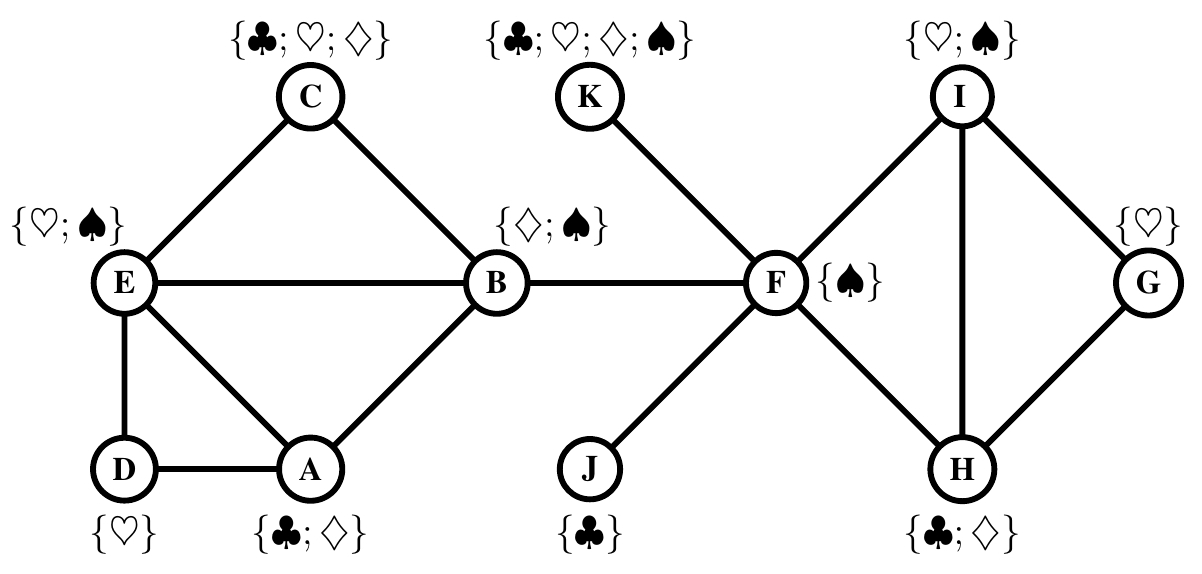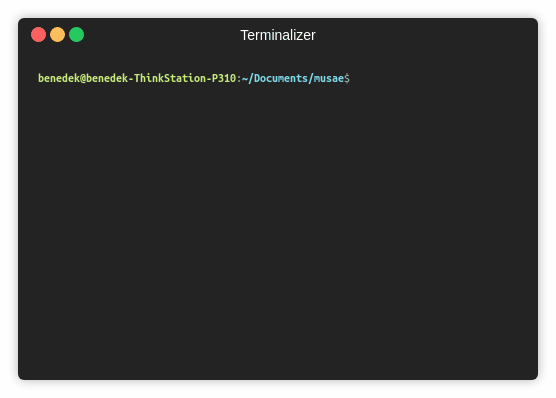benedekrozemberczki / Musae
Programming Languages
Projects that are alternatives of or similar to Musae
MUSAE
The reference implementation of Multi-Scale Attributed Node Embedding.
Abstract
We present network embedding algorithms that capture information about a node from the local distribution over node attributes around it, as observed over random walks following an approach similar to Skip-gram. Observations from neighborhoods of different sizes are either pooled (AE) or encoded distinctly in a multi-scale approach (MUSAE). Capturing attribute-neighborhood relationships over multiple scales is useful for a diverse range of applications, including latent feature identification across disconnected networks with similar attributes. We prove theoretically that matrices of node-feature pointwise mutual information are implicitly factorized by the embeddings. Experiments show that our algorithms are robust, computationally efficient and outperform comparable models on social, web and citation network datasets.
The second-order random walks sampling methods were taken from the reference implementation of Node2Vec.
The datasets are also available on SNAP.
The model is now also available in the package Karate Club.
This repository provides the reference implementations for MUSAE and AE as described in the paper:
Multi-scale Attributed Node Embedding. Benedek Rozemberczki, Carl Allen, and Rik Sarkar. arXiv, 2019. https://arxiv.org/abs/1909.13021
Table of Contents
Citing
If you find MUSAE useful in your research, please consider citing the following paper:
>@misc{rozemberczki2019multiscale,
title = {{Multi-scale Attributed Node Embedding}},
author = {Benedek Rozemberczki and Carl Allen and Rik Sarkar},
year = {2019},
eprint = {1909.13021},
archivePrefix = {arXiv},
primaryClass = {cs.LG}
}
Requirements
The codebase is implemented in Python 3.5.2. package versions used for development are just below.
networkx 2.4
tqdm 4.28.1
numpy 1.15.4
pandas 0.23.4
texttable 1.5.0
scipy 1.1.0
argparse 1.1.0
gensim 3.6.0
Datasets
Logging
The models are defined in a way that parameter settings and runtimes are logged. Specifically we log the followings:
1. Hyperparameter settings. We save each hyperparameter used in the experiment.
2. Optimization runtime. We measure the time needed for optimization - measured by seconds.
3. Sampling runtime. We measure the time needed for sampling - measured by seconds.
Options
Learning the embedding is handled by the src/main.py script which provides the following command line arguments.
Input and output options
--graph-input STR Input edge list csv. Default is `input/edges/chameleon_edges.csv`.
--features-input STR Input features json. Default is `input/features/chameleon_features.json`.
--output STR Embedding output path. Default is `output/chameleon_embedding.csv`.
--log STR Log output path. Default is `logs/chameleon.json`.
Random walk options
--sampling STR Random walker order (first/second). Default is `first`.
--P FLOAT Return hyperparameter for second-order walk. Default is 1.0
--Q FLOAT In-out hyperparameter for second-order walk. Default is 1.0.
--walk-number INT Walks per source node. Default is 5.
--walk-length INT Truncated random walk length. Default is 80.
Model options
--model STR Pooled or multi-scale model (AE/MUSAE). Default is `musae`.
--base-model STR Use of Doc2Vec base model. Default is `null`.
--approximation-order INT Matrix powers approximated. Default is 3.
--dimensions INT Number of dimensions. Default is 32.
--down-sampling FLOAT Length of random walk per source. Default is 0.001.
--exponent FLOAT Downsampling exponent of frequency. Default is 0.75.
--alpha FLOAT Initial learning rate. Default is 0.05.
--min-alpha FLOAT Final learning rate. Default is 0.025.
--min-count INT Minimal occurence of features. Default is 1.
--negative-samples INT Number of negative samples per node. Default is 5.
--workers INT Number of cores used for optimization. Default is 4.
--epochs INT Gradient descent epochs. Default is 5.
Examples
Training a MUSAE model for a 10 epochs.
$ python src/main.py --epochs 10
Changing the dimension size.
$ python src/main.py --dimensions 32
License





